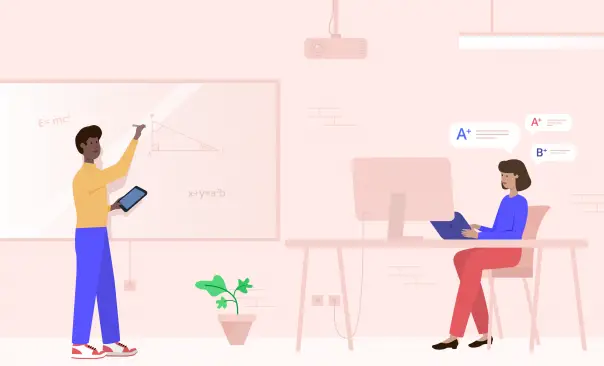A Tapestry of Tongues
Imagine a classroom buzzing with a kaleidoscope of languages. Urdu mingles with Pashto, Punjabi whispers secrets to Sindhi, and English adds a global melody. This isn't a scene from a multilingual metropolis, but a potential reality for classrooms across Pakistan, a nation brimming with linguistic diversity. Over 70 languages paint the country's cultural landscape, each a vibrant thread woven into the rich tapestry of Pakistani identity.
However, the current education system often overlooks this linguistic wealth. With a focus on Urdu and English, many students grapple with grasping complex concepts in unfamiliar languages. This is where multilingual education (MLE) steps in, offering a transformative approach to learning. By harnessing the power of a child's mother tongue, MLE unlocks a world of possibilities, fostering a love for learning, boosting academic achievement, and preparing students to thrive in a globalized world. Let's delve into the compelling arguments for MLE in Pakistan, exploring its advantages, navigating the challenges, and ultimately, envisioning a brighter educational future where every language finds its voice.
The Power of Many Tongues
Pakistan is a land brimming with cultural and linguistic diversity. Over 70 languages are spoken across the country, each with its own rich history and traditions. However, the current education system primarily focuses on Urdu and English, leaving many students struggling to grasp concepts in languages unfamiliar to them. This is where multilingual education (MLE) emerges as a powerful tool for unlocking a brighter educational future for Pakistani children.
Embracing Mother Tongues: A Foundation for Learning
MLE emphasizes using a child's mother tongue as the primary medium of instruction in early education. This allows children to build a strong foundation in literacy and critical thinking skills. Studies show that students who learn in their mother tongue perform better academically and develop a deeper understanding of subjects.
For instance, imagine a young Balochi girl in Turbat struggling to grasp complex scientific concepts explained in Urdu. MLE would allow her to learn these concepts in her native language, fostering a love for learning and boosting her confidence.
Beyond Borders: The Advantages of Multilingualism
The benefits of MLE extend far beyond early education. Multilingualism equips students with the ability to communicate effectively with a wider range of people. In today's globalized world, fluency in multiple languages opens doors to international education opportunities, better job prospects, and intercultural understanding.
Think about a young man in Lahore who aspires to study engineering abroad. Proficiency in English, alongside his native Punjabi, would significantly enhance his chances of acceptance into a prestigious university.
Challenges and Considerations: Moving Forward with MLE
Implementing a successful MLE system in Pakistan requires careful consideration of various challenges. Developing appropriate curriculum materials and training teachers proficient in multiple languages are crucial steps. Additionally, addressing the socio-economic divide that often limits access to quality multilingual education is essential.
Imagine a dedicated Sindhi teacher in Karachi struggling to find appropriate resources to teach mathematics in his native language. Increased government investment in creating these resources would greatly support the implementation of MLE.
Finding the Right Fit: Home Tutors and Multilingual Learning
While systemic changes are underway, parents can actively seek to support their children's multilingual education journey. Hiring a home tutor proficient in a specific language can provide students with personalized learning experiences.
For example, a student in Islamabad facing difficulties with English grammar can benefit from one-on-one tutoring from a qualified home tutor in Islamabad. Similarly, a child in Karachi who wants to improve their fluency in French can find a suitable home tutor in Karachi to guide them.
A Brighter Multilingual Future for Pakistan
Embracing multilingual education is a step towards a more inclusive and equitable education system in Pakistan. By nurturing the inherent linguistic diversity of the country, MLE can empower students to excel academically, become global citizens, and celebrate the rich tapestry of languages that define Pakistan's cultural heritage. As Pakistan moves forward, creating a space for all languages to flourish will pave the way for a brighter future for generations to come.
Conclusion: Unlocking Potential, One Language at a Time
Pakistan's multilingual reality presents both a challenge and a golden opportunity. By embracing MLE, the education system can unlock the full potential of every child. Equipping students with strong foundations in their mother tongue and additional languages empowers them for academic success, global citizenship, and cultural appreciation.
While challenges exist, they are not insurmountable. With dedicated efforts towards curriculum development, teacher training, and addressing resource gaps, MLE can become a cornerstone of educational reform in Pakistan. Parents can also play a vital role by seeking support from qualified home tutors to supplement their children's multilingual learning.
Investing in MLE is an investment in Pakistan's future. By nurturing the symphony of languages that resonate across the country, Pakistan can empower its youth to lead the way in a world connected by understanding and shared experiences.





